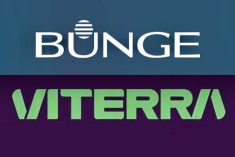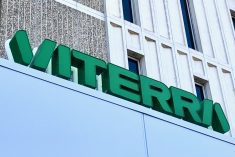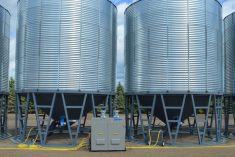London | Reuters –– Commodities trader and miner Glencore reported an 18 per cent rise in full-year profit on Thursday, buoyed by a rebound in raw materials prices, and said it was well-placed financially for small acquisitions or a special dividend payout.
Analysts said the results beat expectations, driving the share price nearly two per cent higher, building on gains of nearly 20 per cent this year, while the wider sector fell by nearly two per cent.
Companies across the mining industry, which was pounded by the commodities market rout of 2015, have exceeded expectations after a recovery in the price of raw materials such as iron ore and coal last year.
Read Also

Senft to step down as CEO of Seeds Canada
Barry Senft, the founding CEO of the five-year-old Seeds Canada organization is stepping down as of January 2026.
Glencore’s 2016 earnings before interest, tax, depreciation and amortization (EBITDA) were up 18 percent year on year at $10.3 billion (all figures US$).
Its trading arm achieved adjusted earnings before interest and tax (EBIT) of $2.8 billion, up 14 per cent and above previous guidance of $2.5 billion to $2.7 billion.
The division is expected to deliver profit between $2.2 billion and $2.5 billion this year, the company said, adding that the lower range reflects the sale of 50 per cent of Glencore Agriculture in December.
Like other miners, Glencore embarked on asset sales to drive down debt and has said it will maintain a lower net debt to EBITDA ratio, a crucial measure of available cash in capital-intensive mining.
CEO Ivan Glasenberg said the ratio could drop below 1:1 this year if no further acquisitions are made, compared with its goal of 2:1 and the 3:1 ratio it favoured previously.
By the end of 2016, net debt had fallen to $15.5 billion, down $14.1 billion from 18 months ago.
Investor cheer
“Since our IPO in 2011 and subsequent acquisition and integration of Xstrata, Glencore has never been so well positioned as it is today,” Glasenberg said.
The results, which analysts said were above consensus, offered some welcome cheer for Glencore investors.
“It’s another stellar quarter that shows how they’re rebounding from the depths of the crisis. The market likes the story,” said David Neuhauser, managing director at U.S. hedge fund Livermore Partners, which owns Glencore shares.
Glasenberg told reporters that shareholders might also benefit from rising dividends and that surplus cash could be used for small deals or “bolt-ons” on the edge of existing assets rather than huge acquisitions.
“We could do many things. We could give our long-suffering shareholders a generous gift of a special dividend,” he said. “To ourselves as shareholders, that would not be a bad thing to do.”
Having promised late last year that payouts would be reinstated, Glencore said on Thursday that its board had recommended a dividend of seven cents per share.
On the negative side, the decision to hedge 55 million tonnes of coal in a rising market led to what Glencore labelled an “opportunity cost” of $980 million, though Glasenberg said the company would continue hedging as appropriate and was locking in coal prices with Japan over a year-long contract.
He remained bullish on commodity prices, predicting good demand from China — buyer of about half of the world’s raw materials — and said that new supply would be offset by lower production from ageing assets as miners invest conservatively.
“What started the negative vibe was increased supply,” he said. “The industry has changed.”
— Reporting for Reuters by Barbara Lewis and Dmitry Zhdannikov. Additional reporting for Reuters by Sanjeeban Sarkar in Bangalore and John Tilak in Toronto.



















